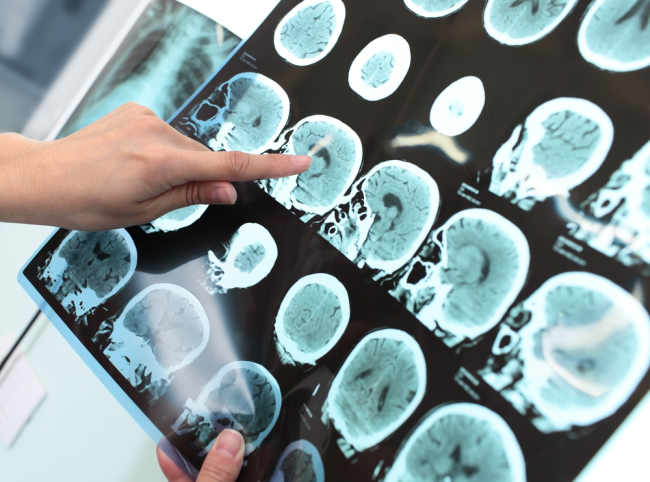Thalidomide is a drug to treat blood cancer multiple myeloma. This drug should not be used by pregnant women because it can cause fetal defects.
To treat multiple myeloma, thalidomide will be combined with the drug dexamethasone. As a cancer drug, thalidomide is able to inhibit tumor growth and boost the immune system to fight cancer cells. Apart from overcoming multiple myeloma, thalidomide is also useful for treating skin complications of leprosy patients, namely: erythema nodosum leprosum.
thalidomide trademark: Thalid

Thalidomide Drug Information
| group | Prescription drugs |
| Category | Chemotherapy |
| Benefit | Overcome multiple myeloma and erythema nodosum leprosum |
| Consumed by | Mature |
| Pregnancy and breastfeeding category | Category X: Studies in experimental animals and humans have demonstrated fetal abnormalities or a risk to the fetus. Drugs in this category are contraindicated in women who are or may become pregnant. It is not known whether thalidomide is absorbed into breast milk or not. If you are breastfeeding, do not use this medicine without telling your doctor. |
| Drug form | Capsule |
Warnings Before Taking Thalidomide
- Thalidomide should not be used by children under 12 years of age. Discuss again with your doctor about the benefits and risks of thalidomide given to children.
- Tell your doctor if you have or are currently suffering from HIV/AIDS, blood clotting disorders, irregular periods, seizures, and tingling or numbness in the hands or feet.
- Thalidomide may cause dizziness or drowsiness. Avoid doing activities that require full focus, such as driving a vehicle or operating machinery.
- Tell your doctor if your condition does not improve or gets worse after two weeks of using the drug.
- The use of thalidomide in the elderly should be done with caution.
- Call your doctor immediately if an allergic reaction or overdose occurs.
Dosage and Rules for Use of Thalidomide
Thalidomide is only given to adult patients. The dosage is adjusted according to the patient's condition and the body's response to treatment. The following is an explanation of the dosage and rules for using thalidomide:
- To treat multiple myelomaThe initial dose is 200 mg, once daily. The dose can be increased every week according to the patient's condition. The maximum dose to treat multiple myeloma is 800 mg per day.
- To overcome erythema nodosum leprosumThe initial dose for patients weighing <50 kg is 100 mg per day. Maximum dose: 400 mg per day. The dose can be reduced gradually if the body's response to treatment is positive.
How to Use Thalidomide Correctly
Make sure you always take thalidomide according to the instructions for use listed on the drug packaging or doctor's recommendations.
Use a glass of mineral water to swallow the thalidomide capsule whole. Do not split, crush, or chew the capsules. Thalidomide should be taken before a meal or at least one hour after a meal.
Make sure that there is sufficient time between one dose and the next. Try to take thalidomide at the same time every day so that the drug can work optimally.
Thalidomide can absorb through the skin and respiratory tract. Therefore, wash your hands immediately with soap and water when exposed to thalidomide powder from a split capsule.
Store thalidomide at room temperature and in a closed container to avoid sun exposure, and out of reach of children.
You are advised not to donate blood while taking or for at least one month after stopping taking thalidomide. Also avoid alcohol consumption while undergoing treatment with thalidomide.
You are also recommended to have regular blood tests to detect the body's response to the treatment. Consult again with your doctor about the schedule of examinations that you need to undergo.
Thalidomide Interactions with Other Drugs
The following are some interactions that can occur if you use thalidomide with other drugs:
- Lowers the number of all three blood cells (red blood cells, white blood cells, and platelets), when used with interferon.
- Increased side effects of barbiturates and chlorpromazine, including muscle, joint, or bone pain, and loss of appetite.
- Increased risk of blood clots, if used with axitinib, bleomycin, doxorubicin, prednisone, tamoxifen, vincristine, and raloxifen.
- Increased drowsiness when diphenhydramine, diazepam, zolpidem, codeine, risperidone and amitriptyline are used.
Thalidomide Side Effects and Dangers
Thalidomide can cause mild side effects. Some of the side effects that can arise from the use of thalidomide are:
- Peripheral neuropathy symptoms.
- Headache.
- Nauseous.
- Constipation.
- Gastric pains.
- No appetite.
- Dry skin.
- Nervous.
- Pain in the bones, muscles, and joints.
Thalidomide can also cause other side effects, such as tremors, shortness of breath, an increased or slowed heart rate, and vomiting accompanied by blood. Although rare, these side effects are serious and require immediate treatment.
Stop taking the drug immediately and seek medical attention if you have a seizure or an allergic reaction to the drug, such as a rash on the skin, swelling of the face, arms, or legs, and shortness of breath.









